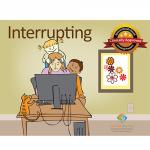Blog Categories
- ADHD
- Applied Behavior Analysis
- Autism Awareness
- Autism Service Providers
- Case Studies
- Dignosis
- Classroom Management
- Credentials
- Ethics
- Family Matters
- FAQs About LIVE Events
- Financial Planning
- Holiday Planning
- IEP's
- Panelists
- Private Equity in Autism & ABA Industry
- Psychopharmacology
- Sensory Processing Disorder
- Speech and Communication
- Subject Matter Experts
- Summer Planning
- Transition Planning
Some Ideas to Make Mealtime a Little Easier
Her responsibilities include designing research studies, protocols and evaluation tools, data collection and analysis and writing and editing grants and reports. Cindy is a member of the National Psychology Honor Society and a licensed social worker. She holds an MSW in Social Work Administration from Ohio State University, a BS in Psychology from Wright State University and is currently pursuing a PhD in Forensic Psychology from Walden University.
Some Ideas to Make Mealtime a Little Easier
Eating meals together is a family ritual that many people have fond memories of. Plenty gets done at the family supper table, including discussing and updating everyone about each member’s day, laughter and family bonding, and time to just be together sharing food. Having a child with autism sometimes turns this pleasurable activity into a hassle for everyone. Here are a few tips you can try to make this time smooth and fun for all.
- Include your child with autism in the meal planning- especially if he or she is a picky eater. Try to include one food per meal that he or she likes so that you are not always fixing more than one meal.
- Encourage your child with autism to try new foods when appropriate- Use preferred foods as a reward for trying non preferred foods. Keep bites of non-preferred foods small enough so they do not seem overwhelming.
- If your child has food texture preference, include some new foods with a similar texture to see if your child likes them.
- Include your child with autism in the family conversations- You can even help your child to create a paragraph or a couple of sentences that he or she wants to tell the family about (what happened to him or her that day, something funny he or she saw, etc.). Your other children can ask the child with autism some concrete questions about his or her day to include him or her.
- If your child likes to roam when he or she is eating, have him or her get items to help with the meal- you could allow your child to walk around and serve people, get napkins, get drinks, silverware or other items.
These are just a few ways to get your child involved with family mealtimes. With some creative
thinking, mealtimes can again be an enjoyable event that includes all members, including your
child with autism.
Are you experiencing increased behaviors from a child with an eating problem? We offer more
tips for dealing with feeding problems in our 90-minute webcast on Treating Food Refusal.
Additional information on strategies can also be found in the supplementary resource guide,
Interventions for Food Refusal Problems of Children with Autism.
Adolescence and Transition Bundle
RECOMMENDED PRODUCTS
Interrupting Social Story Curriculum





